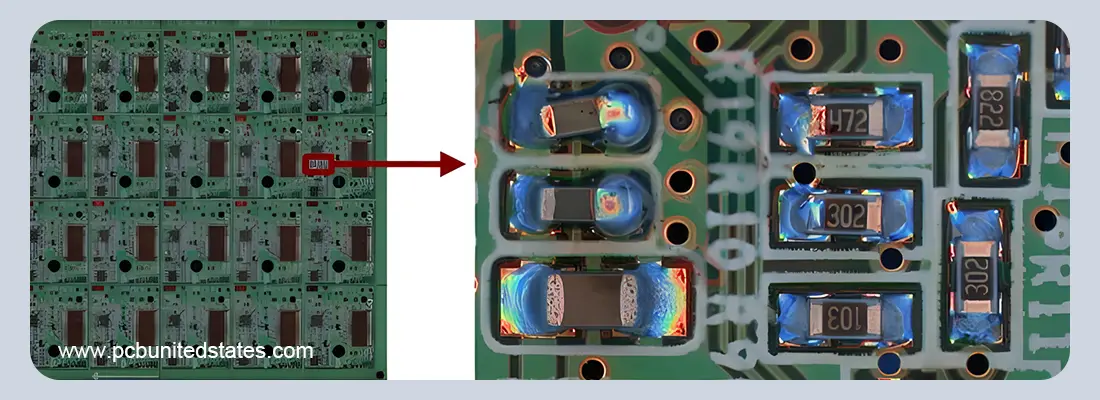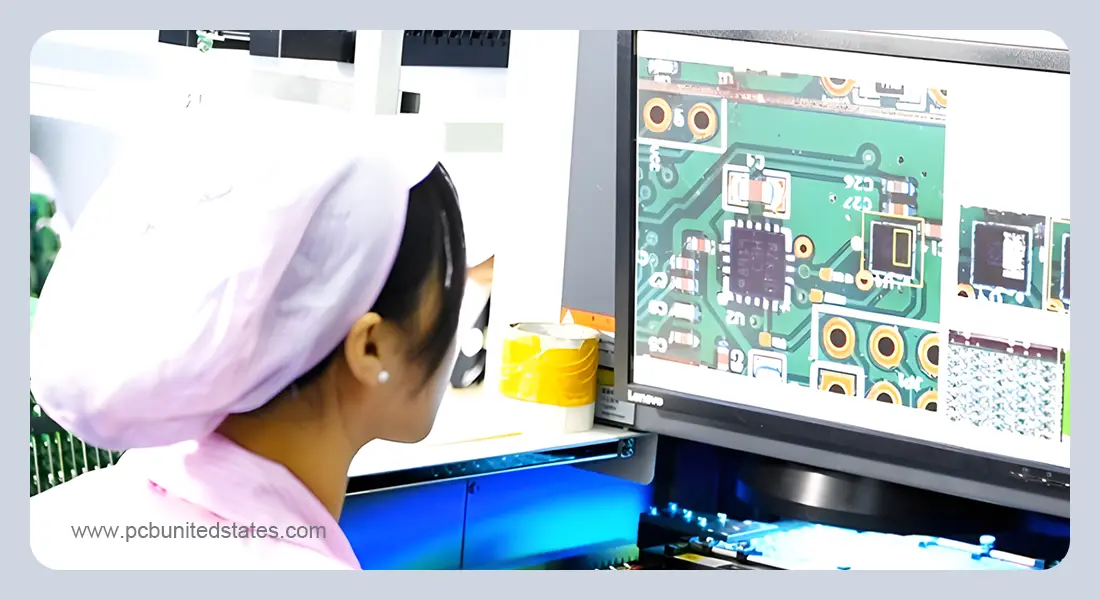Automated Optical Inspection (AOI)
In the electronics manufacturing process, any misplaced component or faulty solder joint can leads to expensive recall. As production volumes grow and circuit boards become increasingly complex, perfect quality control cannot be achieved by human eyes alone. At this point, Automated Optical Inspection(AOI) comes into play. AOI devices are able to detect defects that cannot be easily seen by the human eye and can check thousands of components in a single minute. At MOKO PCB, it is one of the most essential methods in our quality control processes, where we maintain quality in all the boards that we manufacture.
What Is Automated Optical Inspection? Why Is It Important?
Automated Optical Inspection refers to a type of visual quality control method applied to the detection of defects that may take place during PCB manufacturing and assembly process phases. This method involves using a camera to scan the circuit board to detect various defects. AOI is characterized by fast speed and precision, and is widely used in different industries.
AOI ensures that every board is of the highest quality since failures or defects in fabrication or assembly are identified and corrected early during production. It does not just guarantee the reliability of the products but also minimizes expensive errors and rework, making it a very useful tool for producing quality and reliable electronic products.
What Kind of Defects Can AOI Check?
The AOI machines are highly effective to identify a variety of defects during the PCB manufacturing and assembly phases:
Bare PCB Inspection
AOI has the capability to detect structural and fabrication defects such as short circuits, open circuits, line violations, spacing violations, excess copper, missing pads, cuts, and hole breakage. Such checks verify the basic integrity of the circuit board prior to component assembly.
SMT Assembly Defects
AOI inspection can identify component-related problems during surface mount technology inspection, which include error in component placement, positioning error, polarity errors, and missing or damaged components. It also helps spot obvious soldering problems such as bridging or tombstoning.
Soldering Quality Issues
AOI systems thoroughly evaluate solder joint quality by identifying solder volume issues, solder pad defects, paste placement problems, and severely damaged components. This ensures reliable electrical connections and product longevity.
Surface and Dimensional Defects
The technology is able to detect surface defects including nodules and scratches and dimensional deformation that may have an impact on functionality or appearance.

How Does Automated Optical Inspection Work?
The major elements of the AOI machine include the advanced lighting systems, machine vision cameras, accurate image capture, and smart processing software that are combined to provide the precise defect detection.
Step 1: Illumination
It starts with the optimal illumination of the PCB. Modern AOI systems employ programmable modules of LEDs, which comprise red, white, green, and blue LEDs that offer uniform and even light. The lighting should be set at several angles so that tall elements do not cast shadows on their shorter counterparts, and so that features requiring low-angle illumination are properly lit. This multi-directional lighting solution is crucial to ensure that clear images of all board features are captured in a detailed way.
Step 2: Image Capture
High-resolution machine vision cameras, from XGA down to multi-megapixel sensors, are used to take detailed images of the PCB, recording 100 f per second. The optical resolution of the camera defines the amount of detail the AOI can capture, and the field of view (FOV) determines the amount of board area that can be inspected at the time of a single shot. Fewer images are required in a system with a wider FOV, whereas high frame rates and fast inspection are offered by narrow FOV systems.
Step 3: Image Processing and Analysis
The images captured are transmitted to high-level processing software, which produces an analysis against pre-defined standards. Such comparison occurs in two ways:
Golden Board Method: An identified good PCB is scanned and stored so that it can serve as the standard for all subsequent inspections.
Algorithm-Based Programming: Product specifics and data are fed into the system to design the inspection profile.
In cases of inconsistencies that go beyond acceptable tolerances, the system flags them as defects for review or rejection.
Advantages and Limitations of AOI Inspection

Advantages:
Non-contact inspection: AOI uses cameras and lighting, so it doesn’t physically touch the PCB, avoiding any risk of damage.
High accuracy: It is capable of detecting defects such as missing parts, soldering issues, or polarity errors with high precision.
Speed and efficiency: AOI is able to test thousands of parts per minute, and this is much more rapid than humans.
Early defect detection: Issues are identified early in the production process, which saves unnecessary rework and time loss.
Consistency: AOI provides consistent and repeatable results without the problem of fatigue compared to human inspectors.
Disadvantages:
Programming effort required: A new board design or revision would require reprogramming, which is a time-consuming process.
Limited flexibility: AOI cannot identify unknown failure modes; it is only able to detect predefined defect types or those that are coded in a program.
Not suitable for all defects: AOI only captures PCB defects and does not capture defects with difficult-to-classify failure modes, such as adhesive or sealing defects.
Final Words
AOI has become an essential part of the quality control systems in modern electronics manufacturing. This technique enables rapid and highly accurate detection of defects that human inspection alone cannot achieve. Although it has its limitations, its capability to decrease the rework, cut the costs and maintain the products reliability makes it a cornerstone in electronics production. At MOKO PCB, we integrate AOI into our manufacturing process to guarantee that every circuit board we deliver meets the highest standards of performance and reliability.
Contact Us
Got any questions or inquiries? Fill out the form and we will get back to you soon

